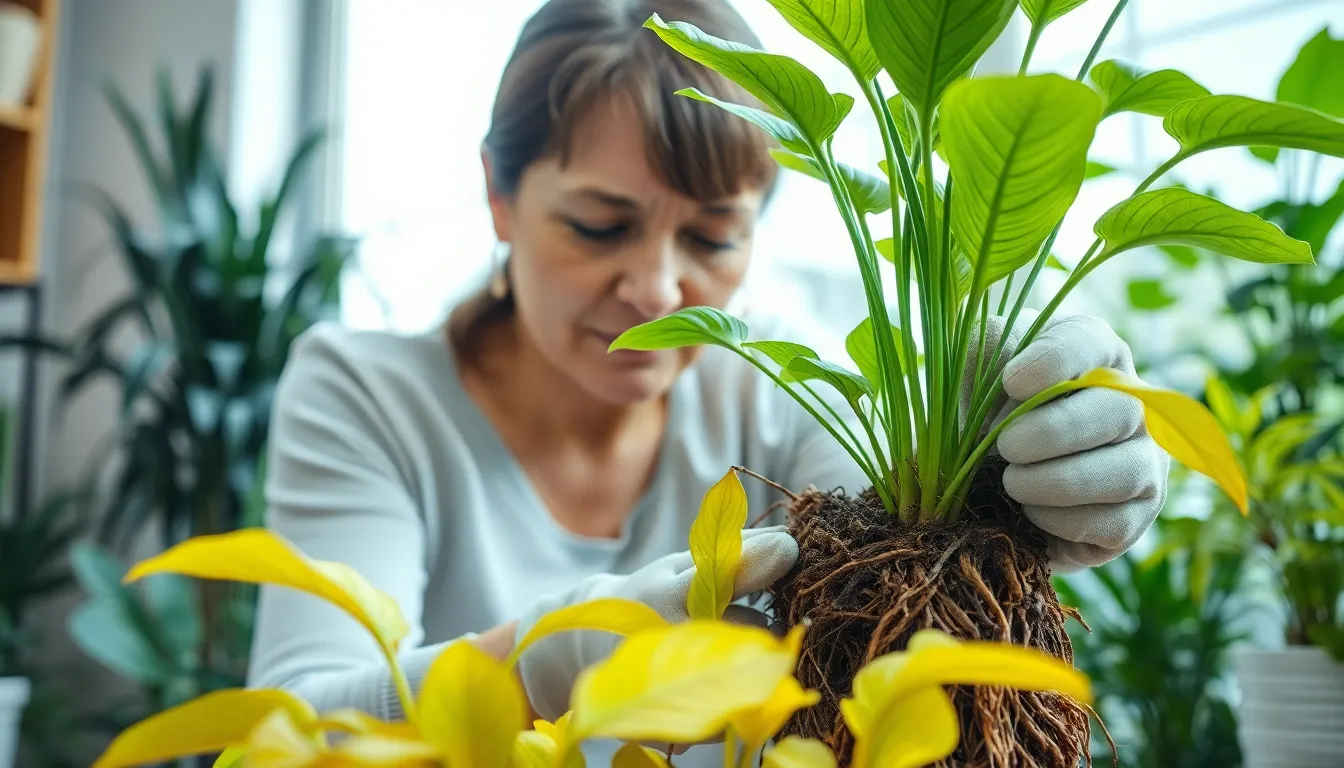
How to Fix Overwatered Plants: Quick Tips to Rescue Your Greenery
Every plant parent has been there—one moment, you’re showering your leafy friend with love, and the next, you’re staring at a sad, droopy mess that looks more like a soggy sponge than a thriving plant. Overwatering can turn your botanical pride into a waterlogged tragedy faster than you can say “green thumb.” But fear not! With a little know-how and a dash of humor, rescuing your overwatered plants is easier than finding a cat video online.
How to Fix Overwatered Plants
Overwatering plants occurs when excess water saturates the soil. This condition can lead to serious damage if left unaddressed.
Causes of Overwatered Plants
Poor drainage in pots often leads to waterlogging. Watering too frequently contributes to moisture buildup. Certain plant species tolerate less water than others, making them more susceptible to overwatering. Because of indoor environment factors, humidity can increase the need for less frequent watering. Additionally, using soil that retains too much moisture can trap water around the roots.
Symptoms of Overwatered Plants
Yellowing leaves are a common sign of overwatering. Wilting leaves can also occur, despite the presence of moisture in the soil. Root rot may develop due to prolonged exposure to soggy conditions. Mold or a foul smell emanating from the soil indicates deterioration. Dropping leaves can signal distress, often pointing to overwatered roots.
Immediate Action Steps

Address overwatered plants promptly to prevent further damage. Taking immediate steps can help restore plant health.
Assessing the Plant’s Condition
Check the plant’s leaves first. Yellowing or drooping often indicates overwatering. Examine the soil next; it should not be soggy. Gently remove the plant from its pot to inspect the roots. Healthy roots appear white and firm, while brown, mushy roots signal rot. Recognizing these symptoms allows for effective intervention. Consider the plant’s overall environment, including humidity and temperature. Adjustments may be necessary to promote recovery.
Adjusting Watering Schedule
Reevaluate the current watering routine. Plants typically require less water during cooler months. Set a specific schedule based on the plant’s needs. For most houseplants, watering every 1-2 weeks is often sufficient. Allow the top inch of soil to dry before the next watering. Use pots with drainage holes to enhance water management. Utilizing a moisture meter can provide precise readings on soil moisture levels. Careful monitoring reduces the likelihood of future overwatering incidents.
Long-Term Solutions
Addressing overwatering issues encompasses more than immediate actions. Long-term solutions enable healthier plant growth and effective water management.
Improving Soil Drainage
Improved soil drainage plays a crucial role in preventing overwatering. Adding perlite or coarse sand enhances soil aeration and promotes excess water flow. Mixing in organic matter, such as compost, improves both drainage and nutrient retention. Choosing well-draining potting mixes also contributes to healthier plant conditions. Regularly checking drainage holes ensures they remain unblocked. If necessary, repotting the plant in fresh soil optimizes drainage and supports root health.
Choosing the Right Pot
Selecting the right pot significantly influences water management. Terracotta pots offer natural breathability and moisture evaporation, making them ideal for many plants. Ensure pots have ample drainage holes to allow excess water to escape. Consider using self-watering pots for consistent moisture levels without overwatering risks. Avoid planting in decorative outer pots without drainage, since they can trap water. Regularly monitoring the pot size prevents root crowding, which can lead to overwatering symptoms.
Prevention Tips
Preventing overwatered plants requires vigilance and understanding of pot needs and effective watering routines.
Recognizing Pot Needs
Selecting the right pot plays a crucial role in water management. Well-draining pots allow excess moisture to escape, reducing the risk of overwatering. Terracotta pots are ideal due to their breathability, promoting evaporation. Monitoring drainage holes is necessary to ensure they remain unobstructed, as clogged holes trap water and create a soggy environment. Appropriate pot size matters; roots require space to absorb moisture properly. A pot that’s too small leads to root crowding, increasing the chances of waterlogged soil. Whenever possible, use pots designed for the specific needs of the plant species, as they accommodate different moisture requirements effectively.
Implementing a Watering Routine
Establishing a regular watering schedule helps prevent overwatering. Noting the top inch of soil dryness before watering is a simple guideline. During cooler months, plants typically require less water, so adjusting the routine accordingly is essential. Utilizing a moisture meter provides accurate soil moisture readings, ensuring the right amount of water is distributed. Additionally, group plants with similar watering needs together; this simplifies monitoring and reduces the likelihood of overwatering. Avoiding a one-size-fits-all approach allows for more tailored care for each plant’s unique requirements. Consistency and observation lead to healthier plants and fewer issues.
Conclusion
Fixing overwatered plants requires prompt action and a strategic approach. By assessing the plant’s condition and adjusting the watering routine, plant owners can revive their green companions. Implementing better drainage practices and using appropriate potting mixes will further enhance plant health.
Monitoring environmental factors and adopting a consistent watering schedule will help prevent future issues. With patience and care, overwatered plants can bounce back, thriving once again in their vibrant glory. Prioritizing observation and adapting to each plant’s needs ensures a flourishing indoor garden.



